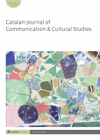
Full text loading...
 , Gloria García-Romeral1
, Gloria García-Romeral1 , Mar Binimelis-Adell1
, Mar Binimelis-Adell1
The research addresses how gender violence against feminists on Twitter during COVID-19 is produced. Mainly focused in the Catalan cultural context, 462,281 attacks on Twitter were analysed, using virtual ethnography and content analysis. We also conducted semi-structured interviews with key agents. This enabled to (1) analyse the profiles of feminists subjected to attacks and those who attack them, (2) identify the characteristics of this violence: how it appears, to which subjects it refers and what the trigger is, (3) identify which axes of inequality intersect in the attacks. The results determine that there are specific typologies of aggressors, that there is a correlation between the political–social agenda and the attacks, essentially on female politicians and journalists and that they tend to happen collectively as personal aggressions that get worse if they intersect with racial issues, for example.

Article metrics loading...

Full text loading...
References


Data & Media loading...

Publication Date:
https://doi.org/10.1386/cjcs_00095_1 Published content will be available immediately after check-out or when it is released in case of a pre-order. Please make sure to be logged in to see all available purchase options.